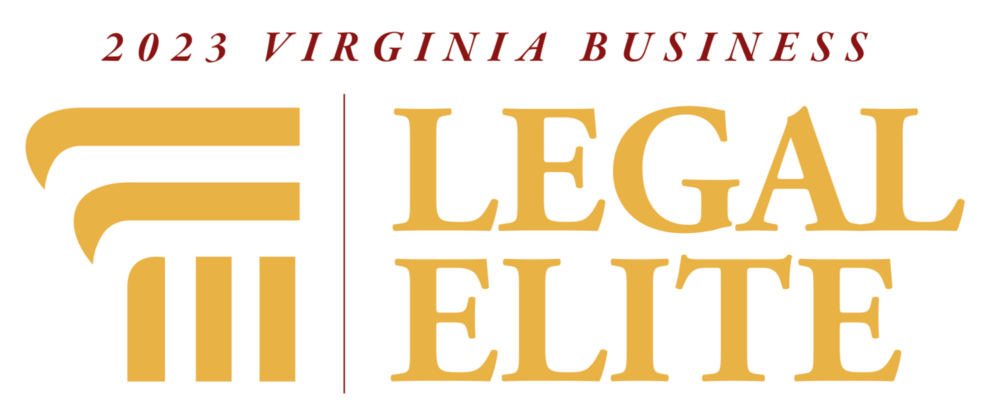January 9, 2017 – Article
BNA’s Patent, Trademark & Copyright Journal
A recent article by Chico Gholz and Marc Weinstein is posted on BNA’s Patent, Trademark & Copyright Journal
BY CHARLES L. GHOLZ AND MARC K. WEINSTEIN
In The More Things Change, the More They Remain the Same! (93 Patent, Trademark & Copyright Journal 2454 (Dec. 2, 2016)), the senior author of this article bemoaned the fact that, in the 19 years since he first wrote an article complaining about what he believes to be a counterproductive practice by the board, the U.S. Court of Appeals for the Federal Circuit has not corrected that practice. Well, fair is fair, and this time we write to applaud what we believe to be a highly utilitarian holding by the Federal Circuit in In re NuVasive, Inc., 841 F.3d 966, 120 U.S.P.Q.2d 1552 (Fed. Cir. 2016) (opinion by Judge Richard G. Taranto for a panel that also consisted of Judges Kimberly A. Moore and Evan J. Wallach).
But first, some background.
Charles L. Gholz is senior counsel in Oblon, McClelland, Maier & Neustadt LLP in Alexandria, Va. He can be reached at (703) 412-6485 or cgholz@oblon.com.
The views expressed herein are those of the authors and are not necessarily shared by their employer or its clients.
What the District Court Wrote in Enzo v. Yeda
In Enzo Therapeutics, Inc. v. Yeda Research and Dev. Co., 477 F. Supp. 2d 699 (E.D. Va. 2007), a 35 U.S.C. § 146 patent interference action, Judge Robert G. Doumar reversed the board’s judgment on the ground that it had denied Enzo due process in a situation not unlike the one involved in NuVasive. Furthermore, it remanded the case to the board to try again, thereby rubbing salt into the board’s wound.
In Enzo v. Yeda, Judge Doumar clearly (although we thought erroneously) believed that the board had given Enzo a raw deal, and he held that ‘‘General principles of equity and due process’’ required that Enzo be given ‘‘a second bite at the apple’’ (also referred to in the opinion as ‘‘a mulligan’’)—i.e., the remand.
In a 2009 article on the Enzo v. Yeda opinion, the senior author of this article and coauthor Robert C. Nissen noted that ‘‘the district court relied entirely on state court opinions, citing no opinion by any Federal court,’’ let alone the Supreme Court. Moreover, it was not even clear that, by its reference to ‘‘principles of . . . due process,’’ it was referencing Constitutional requirements. Nevertheless, the authors concluded that ‘‘Every one of us who practices interference law would appreciate an occasional mulligan!,’’ and they predicted that, ‘‘unless and until the Federal Circuit decides that a party [to an interference] does not have a constitutional due process right to a mulligan,’’ the APJs would ‘‘see citations to …[Enzo v. Yeda] until they are sick of it.’’
How the District Court’s Opinion in Enzo v. Yeda Was Treated
The district court’s opinion in Enzo v. Yeda did not herald the bright new day that some had hoped. Almost immediately, one other district court judge attempted to limit the holding there, stating that Enzo v. Yeda should be limited to deadlines based on ‘‘regulatory requirement[s] rather than [on] statutory [requirements.]’’ Aristocrat Techs. v. Int’l Game Tech., 491 F. Supp. 2d 916, 929, 84 U.S.P.Q.2d 1465, 1476 (N.D. Cal. Jun. 13, 2007) (opinion by Judge Martin J. Jenkis).
Similarly, Judge Sue L. Robinson in Delaware found that Enzo v. Yeda was limited to instances in which the party had exhausted its administrative remedies and granted a motion to dismiss for lack of subject matter jurisdiction when the complaining party had failed to do so. Human Genome Scis., Inc. v. Amgen, Inc., 552 F. Supp. 2d. 466, 474-75, 2008 BL 100677 (D. Del. May 9, 2008).
But, beyond these cases, there have been almost no citations to or discussion of Enzo v. Yeda by the courts or by the Patent Trial and Appeal Board (or its predecessor the Board of Patent Appeals and Interferences). (Of course, the fact that they did not choose to cite Enzo v. Yeda in their opinions does not mean that that embarrassing opinion was not cited to Their Honors!)
What the Federal Circuit Wrote in NuVasive
NuVasive was an appeal from the decisions of a panel of the board in two IPRs filed by the same company (Medtronic) against the same patent. However, by the time that NuVasive was briefed, Medtronic had settled out, and the Patent and Trademark Office director stepped in to defend the panel’s decisions.
In both IPRs the panel had relied on a particular reference (Michelson) to show particular length and width dimensions of a spinal implant. On appeal, NuVasive contended that it had not received adequate notice of opportunity to address the panel’s interpretation of the Michelson reference. The court found that NuVasive had received adequate notice in one IPR (‘‘IPR 507’’) but not in the other (‘‘IPR508’’), which makes NuVasive a particularly good teaching opinion.
In IPR507, Medtronic’s petition relied primarily on another reference (Frey), but ‘‘in one brief passage’’ it referred to Michelson and argued that it would have been obvious to modify the spinal implant taught by Frey to have the length and width dimensions of the spinal implant taught by Michelson.
In IPR508, Medtronic’s petition relied on different primary references and, while it referenced Michelson, it did not argue that it would have been obvious to modify the spinal implants taught by the primary references to have the length and width dimensions of the spinal implant taught by Michelson.
A panel of the board (consisting of Administrative Patent Judges Sally C. Medley, Lora M. Green and Stephen C. Siu) instituted IPR507 based on Frey in view of Michelson, and it instituted IPR508 based on either of two of Medtronic’s primary references in view of Michelson and another secondary reference.
In its Patent Owner Responses in the two IPRs, NuVasive argued that ‘‘no single reference’’ taught a spinal implant having the length and width dimensions recited in its claims.
In its Replies, Medtronic pointed to a particular figure (Figure 18) in Michelson on which it had not focused in its petitions and argued that that Figure 18 taught a spinal implant having both the length and the width dimensions recited in NuVasive’s claims.
That’s when the fun began:
NuVasive objected to Medtronic’s argument regarding Michelson’s Figure 18, which it contended was a new ground of invalidity asserted for the first time on reply. It requested leave to file motions to strike or, alternatively, surreplies, which the Board denied. NuVasive also attempted to address the matter at oral argument, but the Board refused to allow NuVasive to make substantive arguments in response. When Medtronic made arguments relating to Michelson’s Figure 18 in its rebuttal time, NuVasive objected again, but the Board assured NuVasive that it understood NuVasive’s position and would consider the propriety of Medtronic’s arguments when making a final decision. [841 F.3d at 970, 120 U.S.P.Q.2d at 1556.]
In its decisions, the panel’s decisions in the two IPRs held some of NuVasive’s claims to be patentable and others to be unpatentable. Insofar as is relevant here, however, the panel’s decisions in both IPRs relied heavily on its finding that Michelson’s Figure 18 disclosed both disputed dimensional limitations in a single spinal implant.
The panel of the Federal Circuit excoriated what the panel of the board had done and remanded to allow the administrative panel to try again. More importantly, however, it clearly explained what gave it the right to do what it was doing:
Under the Administrative Procedure Act, we must ‘‘hold unlawful and set aside agency action . . . not in accordance with law [or] … without observance of procedure required by law.’’ 5 U.S.C. § 706. In the non-IPR setting, we have made clear that whether a ground the Board relied on was ‘‘new,’’ requiring a new opportunity to respond, is a question of law, subject to de novo review. See In re Stepan Co., 660 F.3d 1341, 1343 (Fed. Cir. 2011). No different standard of review is called for on the closely related issue in the IPR context. See Belden Inc. v. Berk-Tek LLC, 805 F.3d 1064, 1080 (Fed. Cir. 2015) (noting similarity of issues). * * *
We first address NuVasive’s procedural challenges to the Board’s reliance on Michelson’s Figure 18 in the two IPRs. ***
‘‘A patent owner in [NuVasive’s] position is undoubtedly entitled to notice of and a fair opportunity to meet the grounds of rejection,’’ based on due-process and APA guarantees. Belden, 805 F.3d at 1080. ‘‘For a formal adjudication like the inter partes review considered here, the APA imposes particular requirements on the PTO. The agency must ‘timely inform[ ]’ the patent owner of ‘the matters of fact and law asserted,’ 5 U.S.C. § 554(b)(3), must provide ‘all interested parties opportunity for the submission and consideration of facts [and] arguments . . . [and] hearing and decision on notice,’ id. § 554(c), and must allow ‘a party . . . to submit rebuttal evidence . . . as may be required for a full and true disclosure of the facts,’ id § 556(d).’’ Dell Inc. v. Acceleron, LLC, 818 F.3d 1293, 1301 (Fed. Cir. 2016) (alterations in . . . [Acceleron]). While ‘‘the rules and practices of the Board generally protect against loss of patent rights without the required notice and opportunity to respond,’’ Belden, 805 F.3d at 1080 (emphasis added), those rules and practices protect against such loss in a given case only when, upon a proper request, the PTO actually provides the opportunities required by the APA and due process. [841 F.3d at 970-71, 120 U.S.P.Q.2d at 1557-58.]
The panel of the court held that the panel of the board had treated Michelson’s Figure 18 as an essential part of its obviousness findings, distinguishing (or attempting to distinguish) precedents in which it had permitted reliance on new references to ‘‘merely reinforce the meaning of another prior-art disclosure’’ or as ‘‘merely serv[ing] to describe the state of the art.’’ However, it held that, at least in IPR508, NuVasive’s raw deal was simply too raw to be countenanced.
In IPR507, the court held that NuVasive had received ‘‘minimally sufficient’’ notice that the board might rely on Figure 18’s disclosure, but that, in IPR508, NuVasive had received no notice at all that the board might rely on Figure 18’s disclosure.
But the two IPRs involved the same parties, addressed the same patent and had been handled in parallel below. If NuVasive was on notice that the panel might rely on Michelson’s Figure 18 in one of the two IPRs, why wasn’t it on notice that the panel might rely on Michelson’s Figure 18 in the other one of the two IPRs?
In what strikes us as the weakest portion of its opinion, the panel of the court handled that sticky wicket as follows:
Despite the consolidated hearing in the two proceedings, the Board treated each inter partes review as a separate, distinct proceeding, and it issued separate final written decisions, independently invalidating some of the same claims based on different mixes of prior art. The Director has furnished no persuasive basis on which we are prepared to hold that a (barely sufficient) notice in one proceeding constituted an obligation-triggering notice in the other proceeding in which a comparable notice was missing. Nor do we see a basis for concluding that the Board could rely on the Figure 18 point in IPR508, where no sufficient notice was given, just because NuVasive chose, in cut-and-paste fashion, to include highly similar discussions of Michelson in its Patent Owner Responses in the two proceedings. We note that neither of NuVasive’s Responses addresses Figure 18, even while they do address some of the content of the Michelson passage cited by Medtronic in the IPR507 petition.
Not until Medtronic’s Reply, after NuVasive’s Patent Owner Response, was NuVasive given fair notice in IPR508 of the Figure 18 factual assertion on which the Board eventually relied. But at no point after the Reply did the Board give NuVasive the required opportunity to respond to that point. Despite requests from NuVasive, the Board refused to permit NuVasive to file a surreply or even to address the matter during oral argument. [841 F.3d at 972-23, 120 U.S.P.Q.2d at 1558; footnote omitted.]
Finally, the court dealt with the Director’s hail-Mary reliance on a totally unsatisfactory and virtually useless point of board procedure:
The Director points out that, although NuVasive was prohibited from filing a motion to strike or a surreply, it was permitted to cross-examine Dr. Hynes, the relevant expert for Medtronic, and to file ‘‘observations’’ on the crossexamination. We have identified such observations as among the vehicles available to protect against APA violations, but we have not declared that vehicle always sufficient to ensure the required opportunity to respond. Belden, 805 F.3d at 1081. Here, the opportunity to file observations was not enough. ‘‘Observations’’ are not a vehicle for submitting new evidence, including new expert declarations, by the patent owner. Indeed, the permitted content and format of observations are tightly circumscribed, see Office Patent Trial Practice Guide, 77 Fed. Reg. 48,756, 48,768 (Aug. 14, 2012), and here the Board rejected portions of NuVasive’s observation for being too argumentative. We cannot view ‘‘observations’’ as a substitute for the opportunity to present arguments and evidence. [841 F.3d at 973, 120 U.S.P.Q.2d at 1558.]
Comments
Concerning the court’s last point, see Gholz and Presper, What’s the Point of Observations and Responses? (92 Patent, Trademark & Copyright Journal 1036 (Aug. 5, 2016)). In that article the authors criticized the observations-and-responses technique with even more vigor than the court did here and contrasted it with the utility of (and occasional need for) surreplies.
Why do we think that NuVasive does a better job than Enzo v. Yeda of dealing with the fortunately uncommon situation of a panel of the board’s having given a party to an inter partes proceeding before the board an outrageously raw deal? Because NuVasive deals with that situation by reliance on a clearly applicable federal statute (namely, the Administrative Procedure Act), thereby opening up reliance on a wealth of federal precedents, as opposed to a vague and boundless reliance on a given reviewing court’s sense of the requirements of ‘‘due process.’’
Granted that NuVasive also refers to ‘‘due process’’ without specifying that it is using that phrase in the fashion required by the Constitution and that it links the phrase ‘‘due process’’ in some undefined fashion to the requirements of the APA. The court could have done a better job of explaining what it meant by ‘‘due process’’ and exactly what measure of ‘‘due process’’ is required by the APA. However, practically speaking, we think that, going forward, it will be enough to rely on the statute.
As Judge Giles S. Rich so often said, ‘‘When in doubt, read the statute!’’









